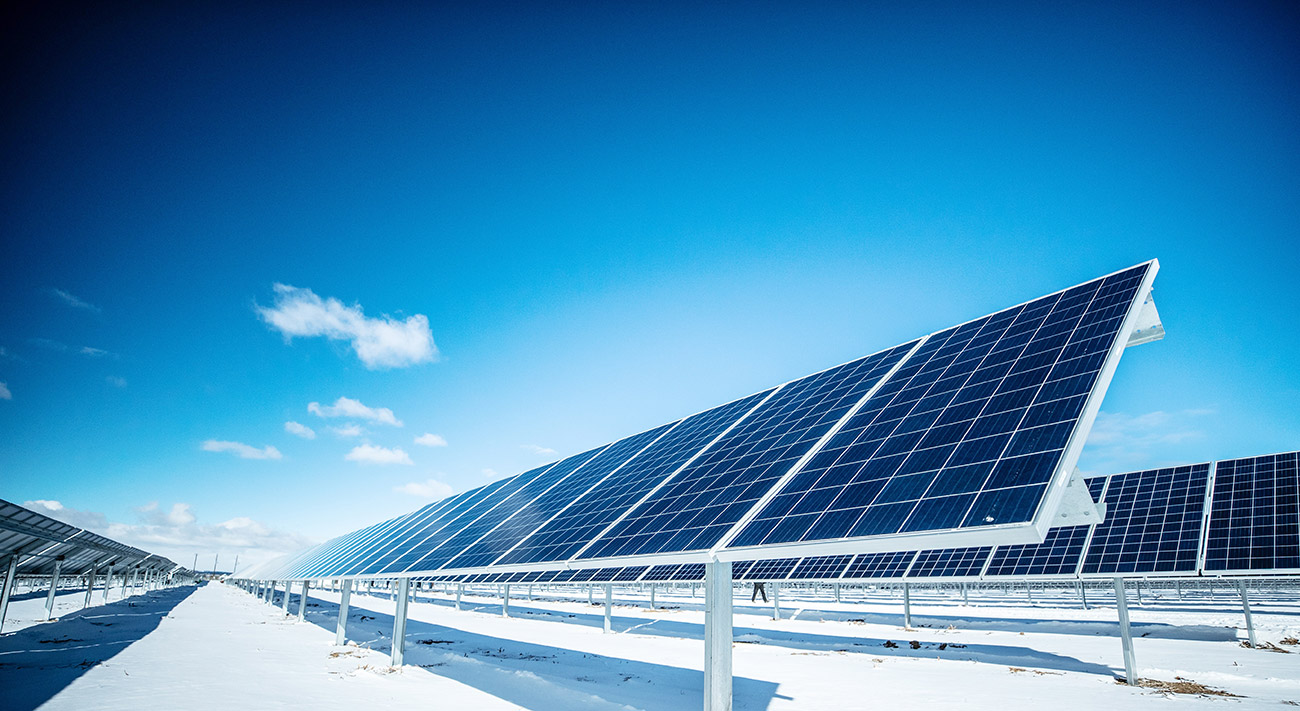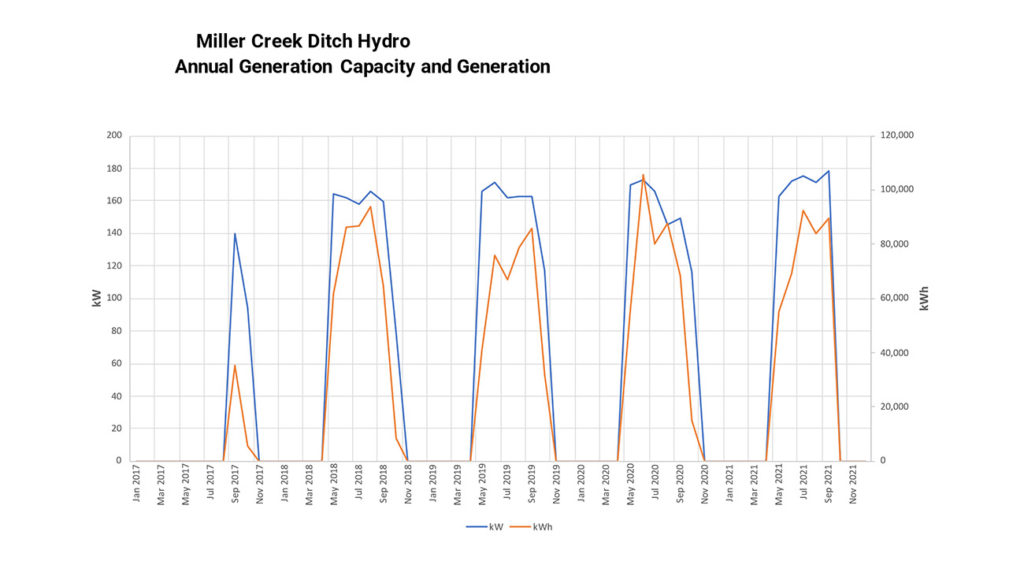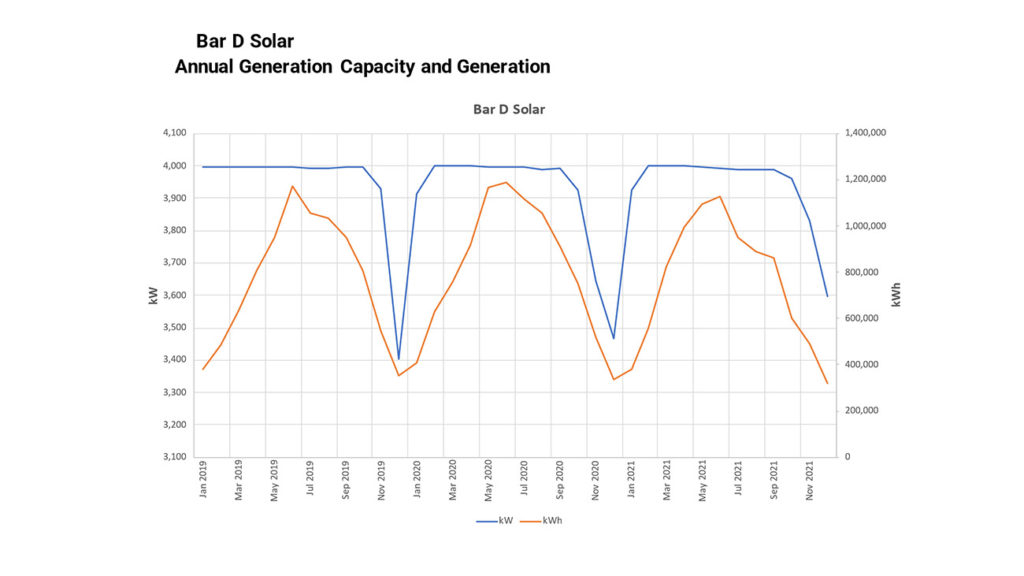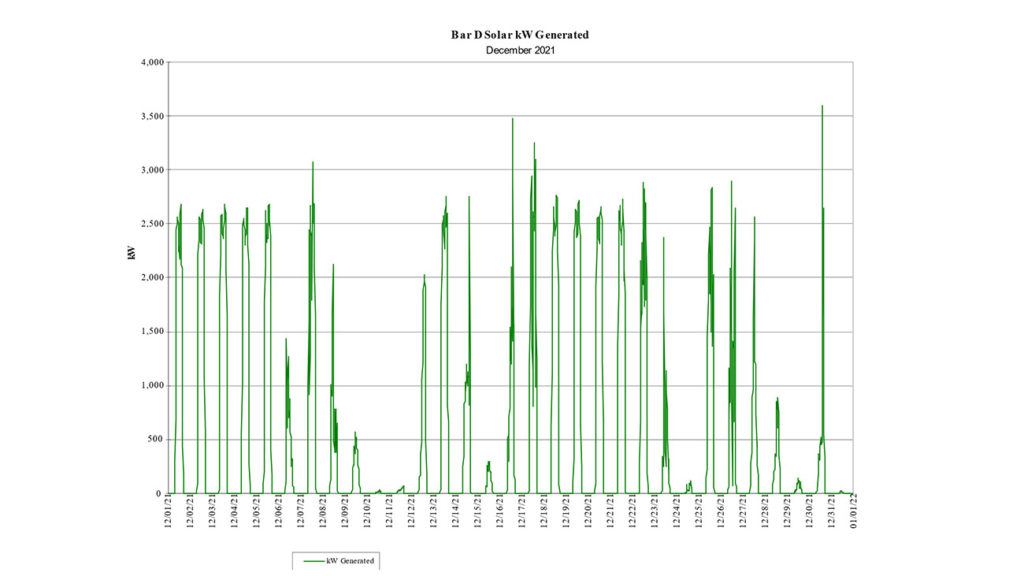
“… all energy resources have some advantages,” said WREA CEO Alan Michalewicz, and they all have some disadvantages. | COURTESY PHOTO
MEEKER I Providing consumers electricity may be straightforward, but the realities of today’s energy landscape are complicated. The transition from traditional fuels along with the competing pressures of reliability, affordability, and renewable energy creates a complex puzzle that energy companies around the globe work to solve each day.
“I think what we have to continue to work towards is the fact that we’re going to have multiple solutions to achieve a reliable and affordable source of energy to our consumers,” said Alan Michalewicz, General Manager/CEO of the White River Electric Association (WREA). An electrical engineer with more than forty years experience in the industry, Michalewicz spoke with the HT earlier this month about his recent presentation to members of the local Farm Bureau where he discussed the complexities in today’s energy market and future of renewable energy in WREA’s service area and surrounding regions.
“My goal for that group was to share that all energy sources have some advantages,” Michalewicz said when talking about different renewable energy sources, such as solar, wind and hydroelectric, while also pointing out the downsides of renewables in comparison to fossil fuel sources like coal and natural gas.
According to Michalewicz, there are benefits to every energy resource. Renewable energy benefits include passive and distributed power generation, and better long-term sustainability, they contribute less greenhouse gasses like carbon dioxide and methane. Downsides of renewables include intermittency, unpredictability, increased complexity for grid stability, reliability and a unique set of environmental impacts that are not yet fully understood.
Representing all sides of a broader discussion, Michalewicz talked about local power generation and
how he imagines “keeping the lights on” as the world moves away from fossil fuels.
MILLER CREEK HYDRO
WREA is a member of the Tri State Generation Transmission Association (Tri State) cooperative, the largest regional power provider in northwest Colorado which serves wholesale power to its 42 electric utility members in four states. Tri State also owns and operates the Colowyo Coal mine and owns the majority of the Craig Station power plant. WREA is subject to a long-term wholesale electric service contract with Tri-State allowing it to obtain a small portion of its power needs from local distributed generation such as a Hydroelectric plant on Miller Creek, the Meeker Solar Garden and the Piceance Creek Solar Farm.
The Miller Creek Ditch Hydro plant uses irrigation water from the Miller Creek Ditch to generate electricity via a hydroelectric plant. From 2018-2021 the Miller Creek Hydro station produced an average of 396,000 kilowatt hours (kWh) annually, generating electricity during irrigation seasons from April to September. Most renewable energy sources have a lower capacity factor than traditional fueled sources like coal fired power plants. WREA’s renewable sources have a range of 20-30% capacity factor; meaning they can produce energy 20-30% of the time. A coal fired power plant has an average capacity factor of 65%.



Michalewicz explained that an hydroelectric plant requires a consistent supply of water, a drop in elevation and connection to the electric grid. The economics of a hydro plant depend on an optimum combination of those factors. White River Electric has explored several sites within the county but to date, the Miller Creek site was the only location that met WREA’s renewable energy goals of being electrically and financially viable. Hydropower facilities traditionally have good capacity factors as they can operate 24 hours a day, but expanding into large scale hydro may be difficult in the arid west.
MEEKER SOLAR GARDEN
WREA has two solar systems that offer another source of renewable energy to its members. The Meeker Solar Garden, which sits just south of the high school, produced about 199,000 kWh annually from 2018-2021. As shown in the graphs on the rigth the summer output is about twice what the winter output is.
PICEANCE CREEK SOLAR
WREA’s larger solar project is called Piceance Creek Solar. Covering 40 acres, the solar farm produced an average of 9.3 million kWh per year from 2019-2021. For comparison, WREA total sales in 2021 were just over 600 million kilowatt hours in 2020. Using the average capacity and generation from Piceance Creek Solar, meeting the electrical demand of WREA’s entire service area would require 2690 acres of solar panels.
Michalewicz noted that other power sources are necessary during winter months, at night, or during extended periods of cloudy weather. His point is demonstrated by the plant’s December 2021 power generation numbers, which show several days that have almost no generation due to weather, and at night when the plant produces no electricity. Piceance Creek Solar production has also been adversely affected by summer haze caused by regional wildfires.
“You get a cloudy day, or you get two or three cloudy days, and you get no output” he said, adding “If you’re trying to design an electrical system that’s going to serve customers, you have to fill in these valleys.”
FILLING THE VALLEYS
Wind power, though not a resource owned by WREA, was also discussed during Michalewicz’ recent Farm Bureau presentation. Just like solar, wind generated electricity is mother nature dependent, making it unpredictable. “It works well when the wind is blowing, but when the wind stops, something else will have to pick up the slack.”
“In my opinion that will be natural gas” Michalewicz said, noting the benefits of the fuel source that allows producers to ramp capacity up and down as needed. Until more permanent alternative sources are developed, he thinks it’s likely to be the best solution.
Another solution to the intermittent power generation issue of wind/solar sources, could be battery storage. Unfortunately, Michalewicz said current battery technology isn’t ready to meet the strenuous demands of large power grids.
“The biggest battery installed at a Colorado Cooperative wouldn’t run the city of Meeker for 12 hours,” he said, noting that the scale of existing battery technologies is “not good for longevity.” Batteries may be a viable option in the future as technology advances.
STORAGE AND GENERATION ALTERNATIVES
“Probably the best battery today in existence is pumped hydro storage” said Michalewicz, further describing a form of power storage that uses reservoirs, elevation changes and hydroelectric turbines to store & later generate electricity on-demand. The technology is considered a highly efficient form of storage, and can be executed on a large scale. According to Michalewicz, there are even discussions of megawatt (thousands of kilowatts) facilities in Colorado, which is geographically suited due to elevation changes.
Hydrogen is also considered an alternative energy solution, though it’s mostly effective at a large scale. Federal funding could soon be directed towards exploring a large-scale hydrogen plant, including in Craig, which is trying to draw such a project as a way to transition the economy amidst the looming coal plant shutdowns.
AFFORDABLE, REDUNDANT, SUSTAINABLE
Energy producers and utility providers have an enormous task ahead as they seek to achieve environmental sustainability, reliability, and grids that don’t create undue economic burden on the populations they serve. Another step towards offering redundancy and keeping costs down for consumers could be “Regional Transmission Organizations” or RTOs. “We’re not there yet, but that’s another important piece to the puzzle over the next couple years” said Michalewicz. RTOs, like the Mid-Continent Area Power Pool to the east allow different energy producing regions to share and transmit power as needed. WREA along with Tri-State are pushing for this type of organization in the intermountain west, which could also improve energy affordability and efficiency, despite an increasingly complex grid.
POLITICS & ECONOMIC REALITIES
Affordability for consumers and profitability for energy producers may come into opposition if new energy technologies are not implemented strategically. State and federal governments offer tax credits for new solar investments, as well as ongoing wind production. These tax breaks are used as a way of bringing down per kilowatt hour costs of renewable energy.
By 2030 energy producers, electric co-ops and public utilities alike must reduce carbon emissions by 80% according to state mandates. Whether or not that’s possible is still up for debate, but if so, it will be a feat of engineering, political cooperation and innovation.
“Hydro makes sense [at] certain times, pump storage makes sense in certain geographic locations, solar makes sense in some spots, wind makes sense in some spots, every resource plays a role in the energy puzzle including natural gas to help fill in the valleys,” said Michalewicz.
By LUCAS TURNER | [email protected]om





















